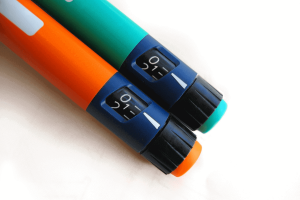We’re excited to announce that we’ve been featured in the Summer 2013 issue of My TCOYD Newsletter! Below, check out our 5 tips for your best doctor’s visit (written by our CEO, Anuj Bhargava, MD, MBA, CDE, FACP, FACE) and be sure to
read the entire newsletter from
Taking Control of Your Diabetes.
Get Your Best Doctor’s Visit: 5 Key Tips
A strong partnership with your health care providers can play a key role in your overall health. However, it can be a challenge to build a partnership in the short 15 to 20 minutes of face time during an appointment. Here are five tips and helpful tools from
MyDiabetesHome.com to make the most of those minutes.
1. Bring a list of all of your medications
Give a list of your medications to your health provider to save appointment time and get better health care. Include the name of each drug, dosage you’re taking, and number of times a day you take it. That includes herbal remedies and over-the-counter drugs, to even multivitamins.
MedSimple allows you to easily record, track and update your medications, dosage information, and who prescribed them for you. MedSimple can also help you set up dose and refill reminders and inform you of many cost saving options. When you use MedSimple through mydiabeteshome.com, it auto-fills your VisitOptimizer report, a printable report that lists your medications, health numbers, goals, and questions to bring to your visit.
2. Bring a log of your blood glucose readings
Your blood glucose values are the blueprint on how your body responds to medication, food, exercise and stress. If you want to get your car fixed, would you go to the mechanic without your car? It’s the same idea with your blood sugars. The doctor won’t know how to accurately “fix” or regulate your levels without seeing what might be causing the issue. Knowing your levels helps the doctor make informed decisions that are best for your body.
The
MySugars tool on MyDiabetesHome.com allows you to easily enter blood glucose readings when you take them before and after the three major meals, before bed, and other times when you test. Enter and store them online or download this
helpful PDF tracker.
3. Know your numbers
It’s common for people with diabetes to have more than one health care provider. Keep all of the members of your health team on the same page by bringing your latest health numbers to your appointment. This prevents duplicate lab tests and can save you and the health provider’s office time and money.
Record and update your A1C, blood pressure, cholesterol, and weight in the
MyNumbers tool, which will auto-fill in the VisitOptimizer report you can bring to your appointment.
4. Keep a list of questions for your doctor
Ditch the doorknob questions: When you utter the words, “Uh, doctor, one more question” as the doctor’s body is in the room, hand is on the door, and mind already on their next patient. Instead, keep the focus on you by making a list of the questions and health concerns to bring to your visit. A list will keep you and your provider on track and maximize your time and theirs. Create your list using the questionnaire on
MyVisits. This tool allows you to enter your goals and questions for your health care provider at the click of a button and it automatically includes them on your personalized VisitOptimizer report.
Once you have the questions, be prepared for the answers. Take important notes on your VisitOptimizer report or bring a tape recorder, note pad, or trusted relative or friend to help.
5. Be your own health advocate
Be prepared to discuss your symptoms, when you feel them, and how strong they appear; then ask your doctor to explain the diagnosis and treatment options. Don’t be afraid to ask them to stop, repeat, or slow down. Remember, your doctor is on your team and wants the best for you.
If you have a constant ache or pain and think it’s something serious, express your concern without having the fixed idea on the treatment you should be given. However, trust your instincts–if something doesn’t sound right; or a lab test or diagnosis doesn’t make sense, believe in yourself and voice concern.




